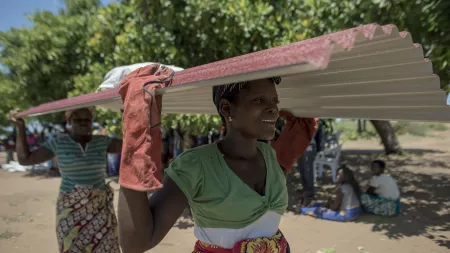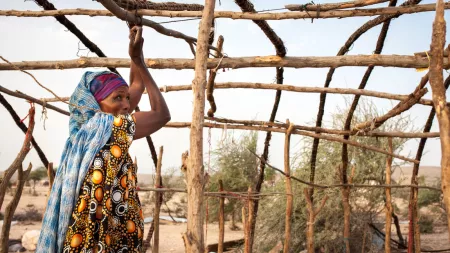The importance of shelter in emergencies
Currently, over 1% of the world’s population is displaced. Of those, 42% are women and children.
Emergency shelter protects vulnerable people from danger, suffering, and exploitation following a natural disaster or man-made crisis. When people lose their homes, they also lose their largest financial and social assets, as well as their sense of belonging and family heritage. If their home doubles as their workplace, they may lose the ability to earn a living.
Poverty and the loss of livelihood makes rebuilding and recovery hard. Supporting vulnerable people to recover adequate and dignified housing after disaster is central to CARE International’s mission to defeat poverty and achieve social justice.
Shelter activities can have multiple positive effects. Restoring housing can improve physical and mental health and empower people to provide for themselves through livelihood activities. Shelter activities themselves create further benefits through temporary employment for those who are unable to access their normal livelihoods. This can help the economy recover following an emergency as well as lift the communal morale of those affected. Emergencies can also provide an opportunity to sensitively redress inequalities in control and ownership of assets, land and property.
What is CARE doing to respond to shelter needs during crises?
CARE International always looks for ways to respond to shelter needs that reflect a broad, holistic approach – and one that does not necessarily imply construction.
A good shelter program will have a positive effect on gender equality, disaster risk reduction, accountability, health, well-being, and livelihoods. A house and home that is durable and appropriate is a step towards resilience and the reduction of long-term vulnerability.
Restoring housing improves physical and mental health, reduces risks and improves safety, provides protection from exploitation, and empowers people to provide for themselves through livelihood activities.
CARE International and our partners focus on community-led, self-recovery processes. Rebuilding better, safer homes to reduce vulnerability and increase long-term resilience to future shocks is vital.
Addressing an individual’s lack of shelter can be done by not just providing shelter directly, but also by providing cash, by supporting incomes and livelihoods, by giving them information about tenure and ownership rights, by providing technical assistance and training, and more.
CARE International’s shelter programs focus on ensuring dignified protection of people against the elements (wind, rain, cold, heat, etc.) and other risks (gender-based violence, theft, trauma, exploitation, natural hazards, etc.) during an emergency as well as recovery or stabilization. Our shelter programs are inclusive but will find additional ways to empower women and girls who may spend a disproportionate amount of time in their homes.


